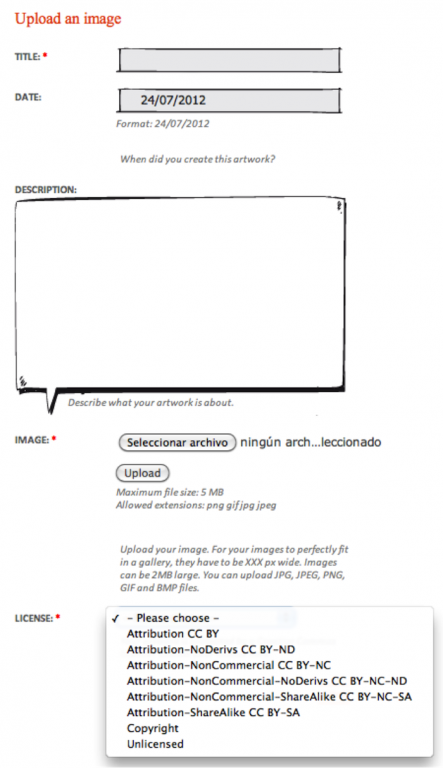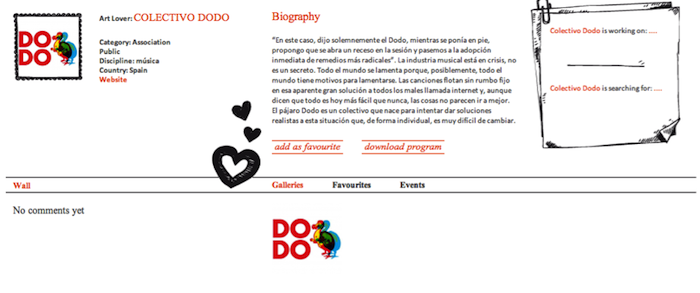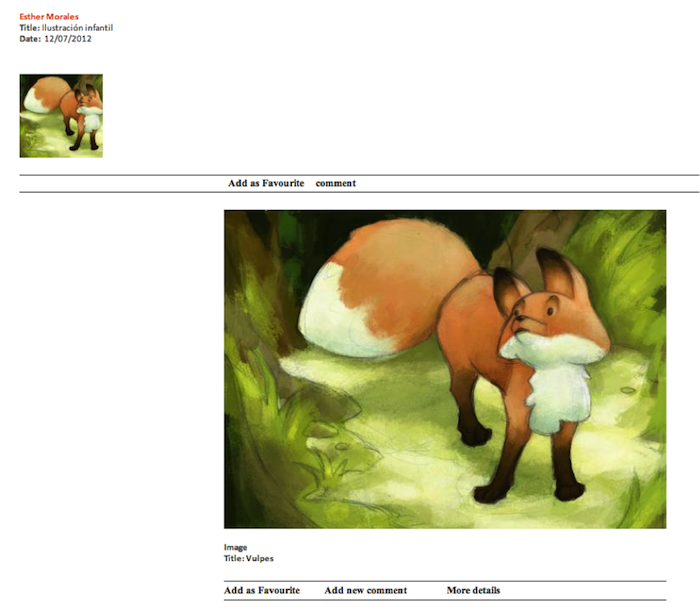Lab:
The Lab is a source of information for Artists and Art Lovers alike. You can find useful information to help develop your career as an artist such as tutorials, interviews, news, and a lot more!

Copyright and Creative Commons licenses: What are they exactly?
On The Art Boulevard you can create your own online portfolio with galleries.
In each of your galleries, you can upload images, audio files, PDF documents, and embed videos as well as including text.
But…did you know, that if you don’t protect this content with a licence, anyone could use it? That’s why we strongly recommend that you always indicate the type of licence your work is protected by when uploading a piece of your artwork to a website. Any piece of work you upload to a gallery will be protected, at least, by the Creative Commons Licence “Attribution-NonCommercial-ShareAlike” (see our Terms & Conditions for more information). If you wish to use a different licence, you can do so when uploading the work to the gallery.

But…what are these licences all about?
In this post we’re going to explain Copyright and Creative Commons Licences.
Copyright.
Copyright is the term used to describe “the rights that belong to the author of every piece of original work or product that he/she creates be it a system, programme, hardware, etc. which establish the conditions of use and commercialisation of the product”.
To indicate graphically that Copyright applies to the work, the following symbol is used: ©.
Copyright is the commercial part of the author’s rights.
Unlike author’s rights that refer to the author as a natural person, copyright only comes in to play once the work has been written down, published or recorded. It essentially controls the ‘right to copy’ and it could be said that copyright is a component of author’s rights.
Please note that copyright regulations and legislation can vary from one country to the next, for this reason we advise you to always verify copyright conditions in your country.
Creative Commons (CC) is a NGO created by Lawrence Lessig, Profesor of Law at Stanford University and specialist of cyberlaw.
“Creative Commons” is also the name of the licenses that created this organisation. The Creative Commons license allows the author to decide the way in which their work will be distributed on the internet.
The Creative Commons licenses were originally created in English but they have been adapted to the legislations of other countries all over the world, and thanks to the Creative Commons International project have been translated into Spanish, Portuguese, French etc.
You can find a description of the six types of Creative Commons licenses on the Creative Commons website.
To help you choose the licence that best fits your needs, you can try out this tool offered by Creative Commons, where you have to answer the following questions:
Would you allow someone to modify your work?
Would you allow someone to use your work for commercial purposes?
For example, if you do not want anyone to modify your work or use it for comercial purposes, you should choose the Attribution-NonCommercial-NoDerivs licence.

So…have you decided how you are going to protect your work from now on?




